|
The Star-Benz Car
Star’s first brush with motorised
transport took place in 1896 when the running gear for
the Electric Construction Company’s most famous car, the
‘Electric Dog Cart’, was built in the works.
The story of the Star car really
began in 1897 when the company acquired a 3.5hp. Benz
car and used it as the basis for the first production
car to be built by a Wolverhampton manufacturer. There
is some uncertainty as to how Star acquired the car. The
most often quoted account suggests that Edward Lisle’s
second son, Joseph, visited Holland, where he learned to
drive. Whilst there he purchased the car and drove it
back to Wolverhampton. At the time he would only have
been about 17 years old, and so members of the Lisle
family believe that the car was purchased from a London
dealer and delivered to Wolverhampton by rail.
|
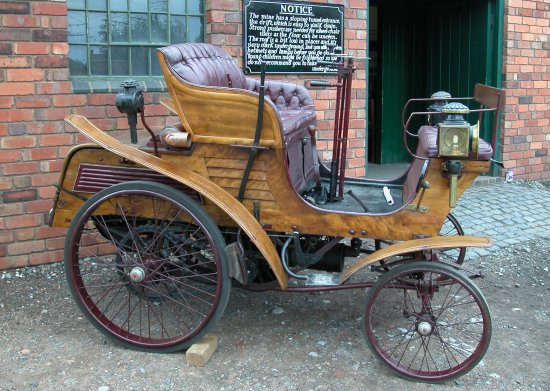 |
Eric Payne's Star-Benz from
1899 with a
vis-a-vis style body, made by Strouds of Niphon Works.
It is believed to be one of the
first six made.
It is seen here at the 2005
Black Country Vehicle Rally, held at the Black Country
Living Museum, Dudley. |
|
By whatever means, it arrived at
the factory, was dismantled, and drawings were prepared
of all of the parts using imperial measurements. A few
modifications and improvements were made to the car, and
it was hastily rebuilt in readiness for testing. The car
left the factory in April 1897 and after a few teething
troubles proved to be extremely reliable. |
| Star purchased the licensing rights
to build Star-Benz cars in Wolverhampton, and went into
production at Stewart Street works. The Star-Benz appeared in October
1898, although only two seem to have been completed in
that year. The delay was caused by a lack of coach built
bodies.
The first six cars were fitted with bodies made
by Strouds, furniture makers, of Niphon Works, Villiers
Street, Wolverhampton. They were of a
vis-à-vis design
with varnished-wood bodywork. |
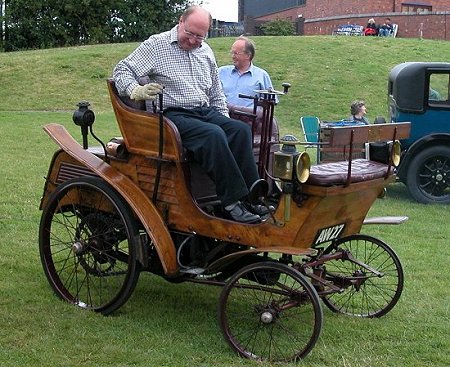
Eric Payne in the driving seat of
his 1899 Star-Benz car. |
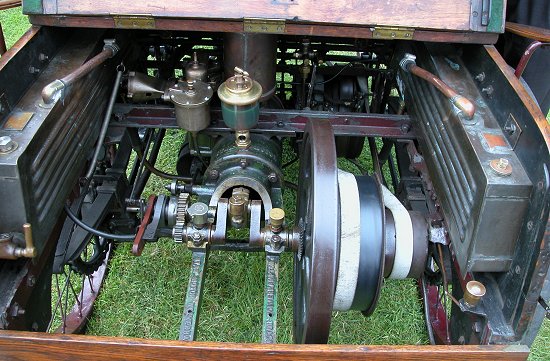 |
The 3.5hp. horizontal
single-cylinder engine in Eric Payne's 1899 Star. |
|
The cars were powered by a
water-cooled 3.5hp. horizontal single-cylinder engine,
with a belt and chain drive to the rear axle.
The car
had two forward speeds, electric ignition, tiller
steering, and two independent powerful hand brakes.
The
two petrol tanks could carry enough fuel for about 100 miles
under favourable conditions.
Standard fittings included
lamps, a horn, a set of tools, and oil cans. The car
initially sold for £189, although by 1900 the price had
fallen to £168. Extras included a leather hood, a
reverse gear, and a climbing gear. Initially each car
took one week to build, but production soon increased to
six cars a week. It is thought that by 1900 around 20
cars a week were leaving the factory.
|

A final view of Eric Payne's car
at the Black Country Living Museum. |
|

An advert from June 23rd, 1900. |
Edward Lisle set up a new company,
the Star Motor Company, a subsidiary of the Star Cycle
Company. His policy was to build as much of the car as
possible in the Star factory, and so when the body
building department opened, Star bodies were built
in-house.
The Star-Benz proved to be a
successful car, and other models were soon produced.
In
1900 the model "A", with a two-cylinder engine, three
forward speeds, and a forward facing passenger seat,
appeared along with the model "C", which is believed to
have been steered from the front seat with a proper
steering wheel.
Altogether some 250 Star-Benz models
were made, and still being offered in 1903. |
| A Star-Benz with a
forward-facing front seat. |
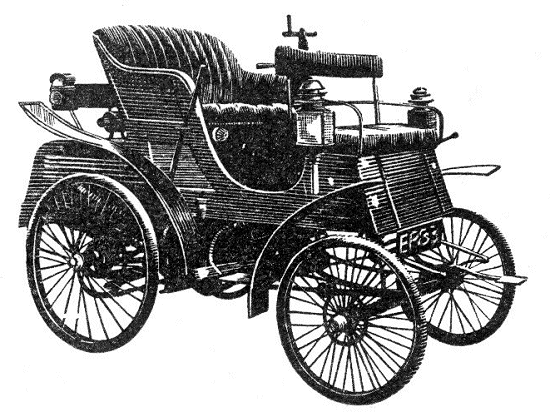 |
|
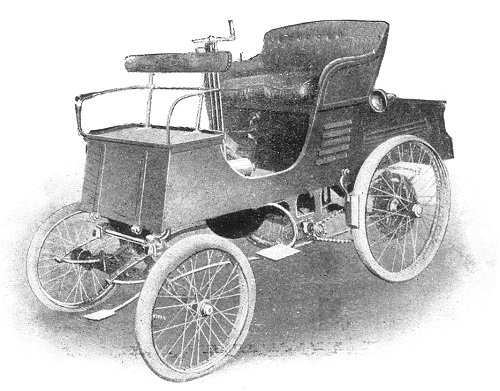
Another Star-Benz with
front-facing seat. Courtesy of Peter Lisle. |
By this early date Star was
claiming that every part of the car was made by them,
except the tyres and chains.
They could also point to
significant improvements in the design over the original
Benz, including a proper carburettor of Star’s own
design.
Exports started early and proved to be a valuable market. In 1899 a car was sent to
Patagonia, with almost sufficient spares to build
another car! |
|